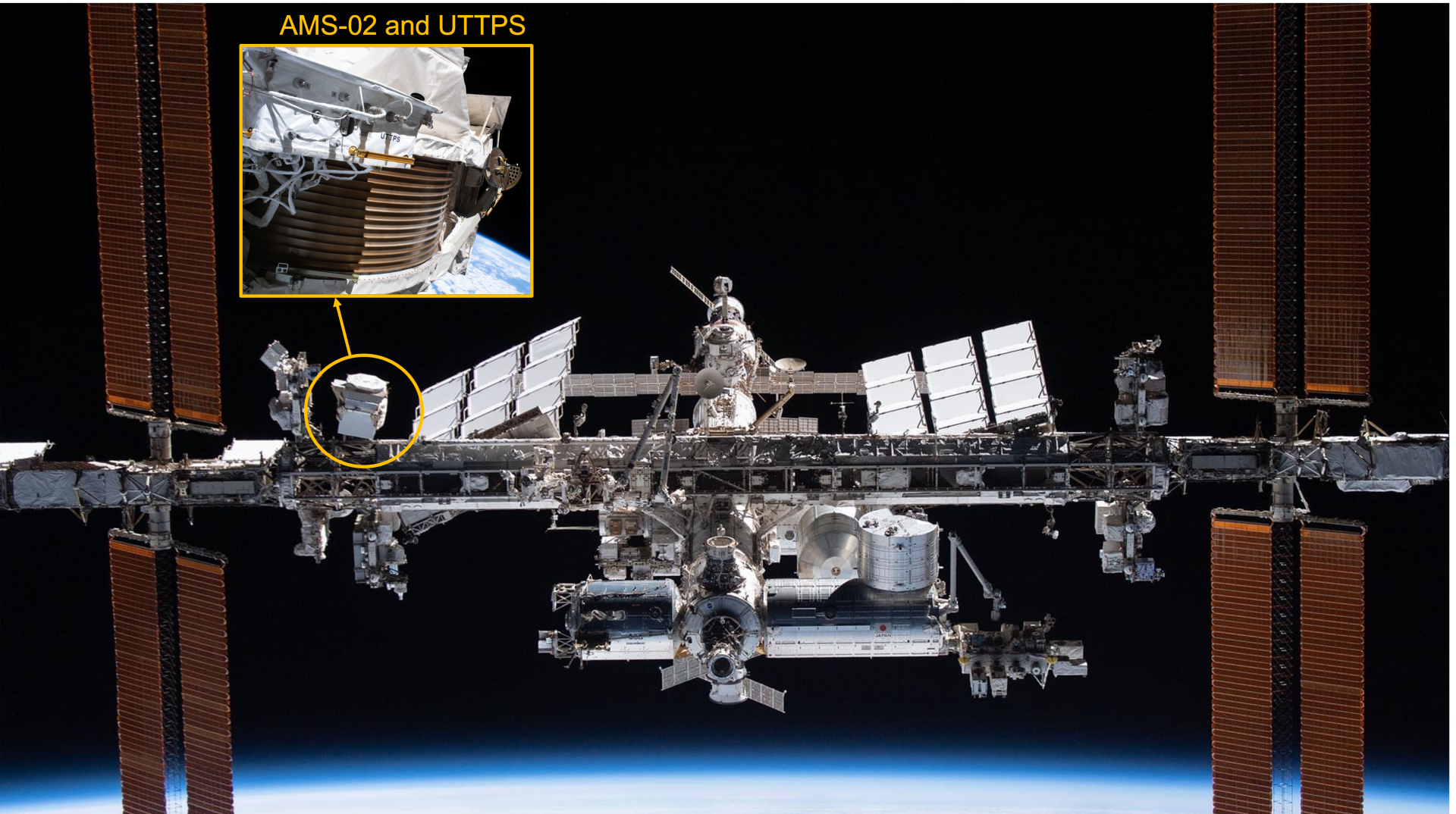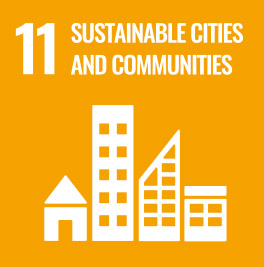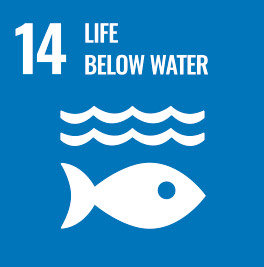SDG9
B5G Future Trend of Smart Communication NCKU Develops CubeSat "IRIS-A" and Completes Communication in Space
B5G Future Trend of Smart communication
NCKU Develops CubeSat "IRIS-A" and Completes Communication in Space
The IRIS-A CubeSat, developed by the Department of Electrical Engineering at NCKU, was launched by a SpaceX Falcon 9 launch vehicle in Florida, USA, in the evening of January 13, 2022 (Taiwan time), and deployed to an orbit of over 500 km, completing the communication with IRIS-A at the ground station in the next morning, January 14, 2022. The launch of the launch vehicle was successful. After more than 10 days of efforts, the Launch and Early Orbit Phase (LEOP) of this satellite has been successfully completed and the satellite is in normal condition and will continue to enter the mission operation and experiment phase.
IRIS-A CubeSat is a two-kilogram class CubeSat designed and developed by a multinational student team led by Professor Jyh Ching Juang of the Department of Electrical Engineering at NCKU, with length, width, and height of 10, 10, and 20 centimeters respectively. This is another major innovation of NCKU in aerospace technology after the successful launch of the PHOENIX CubeSat in 2017.
According to Jyh Ching Chuang, Phoenix CubeSat had been successfully operating for two years since its launch in 2017, and was officially decommissioned in 2019, laying a good foundation of aerospace technology for NCKU, and therefore the team of NCKU has been implementing the "Intelligent Remote Sensing and Internet CubeSat Key Technology Development Integration and Flight Test" project under the funding of Ministry of Science and Technology since 2018 to develop the IRIS series of CubeSats. IRIS, Intelligent Remote sensing and Internet Satellite, is a satellite that combines the functions of intelligent remote sensing and Internet of things. This year, the first CubeSat, IRIS-A, was successfully launched and connected as expected, demonstrating the high Technology Readiness Level (TRL) of the overall satellite system and functional modules, which is quite a feat.
IRIS-A CubeSat is placed in orbit at an altitude of more than 500 km and is expected to operate for about six to seven years under normal operation. Its mission objective is to demonstrate Internet of Things (IoT) communication technology in space. So far, the tracking data, satellite positioning information and component status data are already available.
The 5G communication technology, which has been hotly discussed in recent years, combines the three features of high bandwidth, low latency, and multiple connections, which can realize the development of smart medical, smart transportation, smart city and other applications in the near future. With the development of 5G and B5G (Beyond 5G) technologies, Low Earth Orbiting (LEO) satellite communications are also being emphasized. Jyh Ching Juang mentioned that 5G base stations cover a narrower area and are prone to blind spots or mid-air zones in terms of communication, so this part of the communication satellite can complement the shortage of terrestrial 5G communication systems. Among the communication satellites, CubeSats are thin, light, short, short-duration and highly maneuverable, which can help the development of satellite communication. In the future, rescue services in remote areas and at sea, tracking people or objects are suitable to use satellites to achieve seamless communication.
The IRIS-A CubeSat has been designed, built, integrated, tested,operated, and applied at NCKU. Jyh Ching Chuang also mentioned that when the project started in 2018, the University of the Philippines, Diliman, expressed its high concern and attention, and even used its own scholarship to support two students to study and exchange at NCKU. In addition to the Philippines, the team also includes students from Thailand, Guatemala, France, and other countries, making the team very international. The implementation of IRIS also appropriately integrates domestic academic and industrial capabilities to improve the overall capability of the space industry in Taiwan.
At this stage, IRIS-A CubeSat's voltage, power, temperature and other system tests are all very good. Jyh Ching Chuang said "We are very happy to announce the successful launch of the first stage and early orbital phase!" The next stage will be the payload operation, IRIS-A CubeSat uses a sun-synchronous orbit, so the arrival time over Taiwan is not fixed but predictable, and the team usually chooses a higher elevation angle, better communication conditions and longer communication time for communication. On average, the IRIS-A CubeSat passes over the ground tracking station about four times per day. In response to the epidemic, the team has developed a remote communication system that allows the satellite to be operated from a remote location while maintaining information security.
In addition to the follow-on IRIS-A, the Naruto team is also working on the IRIS-B and IRIS-C CubeSats, which are expected to be launched in 2023. The mission objective of IRIS-B is to demonstrate in-orbit intelligent telemetry data processing to increase mission flexibility by effectively targeting the region of interest (ROI) through artificial intelligence and image recognition technology executed on board the satellite; IRIS-C will focus on verifying the real-world performance of key components in the space environment. It is expected that the subsequent IRIS CubeSats will be successfully launched into space for missions, which will have positive effects on the development of the space industry in Taiwan, including the development of key technologies on the ground, the cultivation of quality space talents, and the implementation of cross-domain system integration technologies, as well as creating more benefits for society.
NCKU Develops CubeSat "IRIS-A" and Completes Communication in Space
The IRIS-A CubeSat, developed by the Department of Electrical Engineering at NCKU, was launched by a SpaceX Falcon 9 launch vehicle in Florida, USA, in the evening of January 13, 2022 (Taiwan time), and deployed to an orbit of over 500 km, completing the communication with IRIS-A at the ground station in the next morning, January 14, 2022. The launch of the launch vehicle was successful. After more than 10 days of efforts, the Launch and Early Orbit Phase (LEOP) of this satellite has been successfully completed and the satellite is in normal condition and will continue to enter the mission operation and experiment phase.
IRIS-A CubeSat is a two-kilogram class CubeSat designed and developed by a multinational student team led by Professor Jyh Ching Juang of the Department of Electrical Engineering at NCKU, with length, width, and height of 10, 10, and 20 centimeters respectively. This is another major innovation of NCKU in aerospace technology after the successful launch of the PHOENIX CubeSat in 2017.
According to Jyh Ching Chuang, Phoenix CubeSat had been successfully operating for two years since its launch in 2017, and was officially decommissioned in 2019, laying a good foundation of aerospace technology for NCKU, and therefore the team of NCKU has been implementing the "Intelligent Remote Sensing and Internet CubeSat Key Technology Development Integration and Flight Test" project under the funding of Ministry of Science and Technology since 2018 to develop the IRIS series of CubeSats. IRIS, Intelligent Remote sensing and Internet Satellite, is a satellite that combines the functions of intelligent remote sensing and Internet of things. This year, the first CubeSat, IRIS-A, was successfully launched and connected as expected, demonstrating the high Technology Readiness Level (TRL) of the overall satellite system and functional modules, which is quite a feat.
IRIS-A CubeSat is placed in orbit at an altitude of more than 500 km and is expected to operate for about six to seven years under normal operation. Its mission objective is to demonstrate Internet of Things (IoT) communication technology in space. So far, the tracking data, satellite positioning information and component status data are already available.
The 5G communication technology, which has been hotly discussed in recent years, combines the three features of high bandwidth, low latency, and multiple connections, which can realize the development of smart medical, smart transportation, smart city and other applications in the near future. With the development of 5G and B5G (Beyond 5G) technologies, Low Earth Orbiting (LEO) satellite communications are also being emphasized. Jyh Ching Juang mentioned that 5G base stations cover a narrower area and are prone to blind spots or mid-air zones in terms of communication, so this part of the communication satellite can complement the shortage of terrestrial 5G communication systems. Among the communication satellites, CubeSats are thin, light, short, short-duration and highly maneuverable, which can help the development of satellite communication. In the future, rescue services in remote areas and at sea, tracking people or objects are suitable to use satellites to achieve seamless communication.
The IRIS-A CubeSat has been designed, built, integrated, tested,operated, and applied at NCKU. Jyh Ching Chuang also mentioned that when the project started in 2018, the University of the Philippines, Diliman, expressed its high concern and attention, and even used its own scholarship to support two students to study and exchange at NCKU. In addition to the Philippines, the team also includes students from Thailand, Guatemala, France, and other countries, making the team very international. The implementation of IRIS also appropriately integrates domestic academic and industrial capabilities to improve the overall capability of the space industry in Taiwan.
At this stage, IRIS-A CubeSat's voltage, power, temperature and other system tests are all very good. Jyh Ching Chuang said "We are very happy to announce the successful launch of the first stage and early orbital phase!" The next stage will be the payload operation, IRIS-A CubeSat uses a sun-synchronous orbit, so the arrival time over Taiwan is not fixed but predictable, and the team usually chooses a higher elevation angle, better communication conditions and longer communication time for communication. On average, the IRIS-A CubeSat passes over the ground tracking station about four times per day. In response to the epidemic, the team has developed a remote communication system that allows the satellite to be operated from a remote location while maintaining information security.
In addition to the follow-on IRIS-A, the Naruto team is also working on the IRIS-B and IRIS-C CubeSats, which are expected to be launched in 2023. The mission objective of IRIS-B is to demonstrate in-orbit intelligent telemetry data processing to increase mission flexibility by effectively targeting the region of interest (ROI) through artificial intelligence and image recognition technology executed on board the satellite; IRIS-C will focus on verifying the real-world performance of key components in the space environment. It is expected that the subsequent IRIS CubeSats will be successfully launched into space for missions, which will have positive effects on the development of the space industry in Taiwan, including the development of key technologies on the ground, the cultivation of quality space talents, and the implementation of cross-domain system integration technologies, as well as creating more benefits for society.
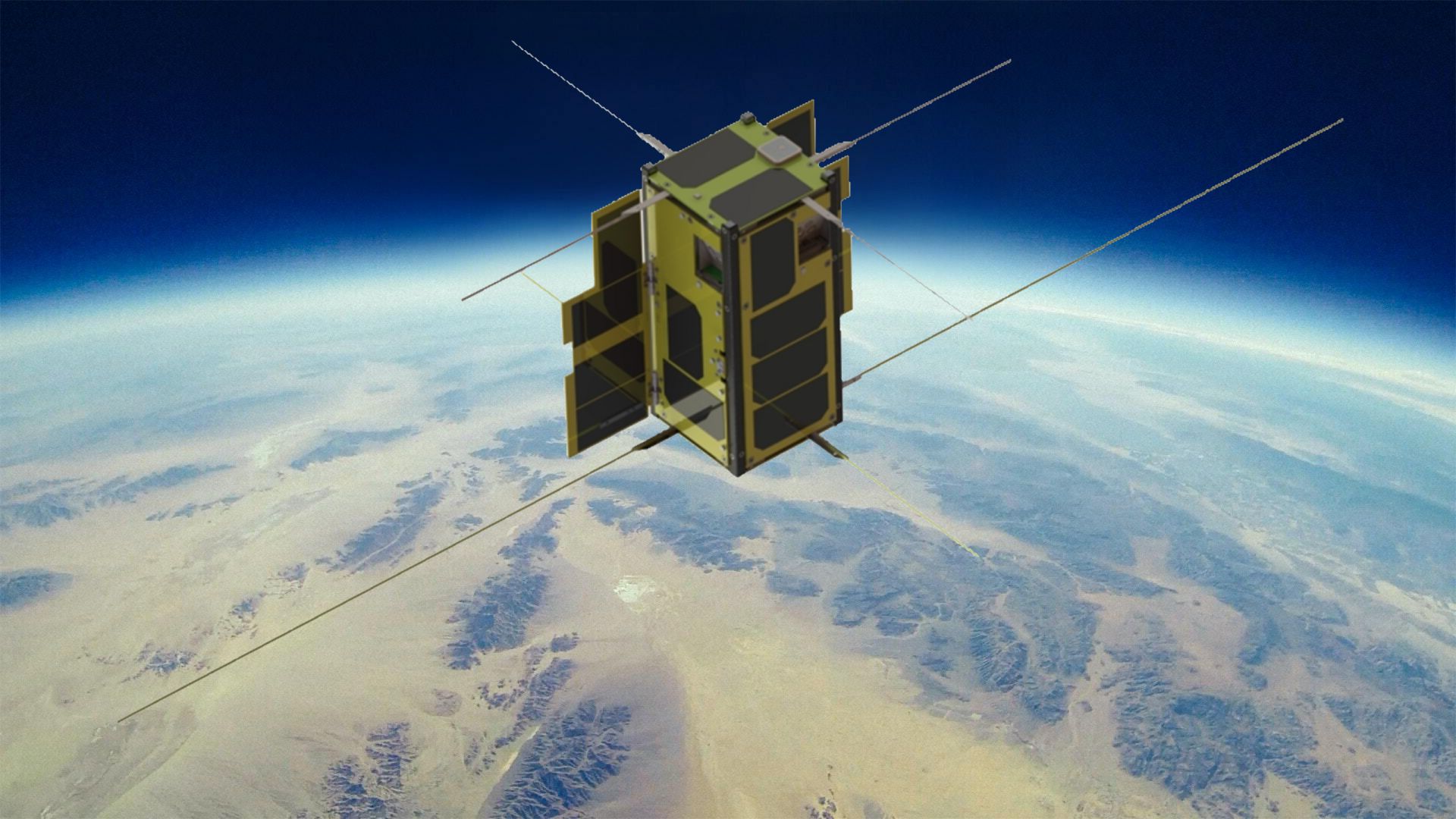
IRIS-A is operating well in the space.
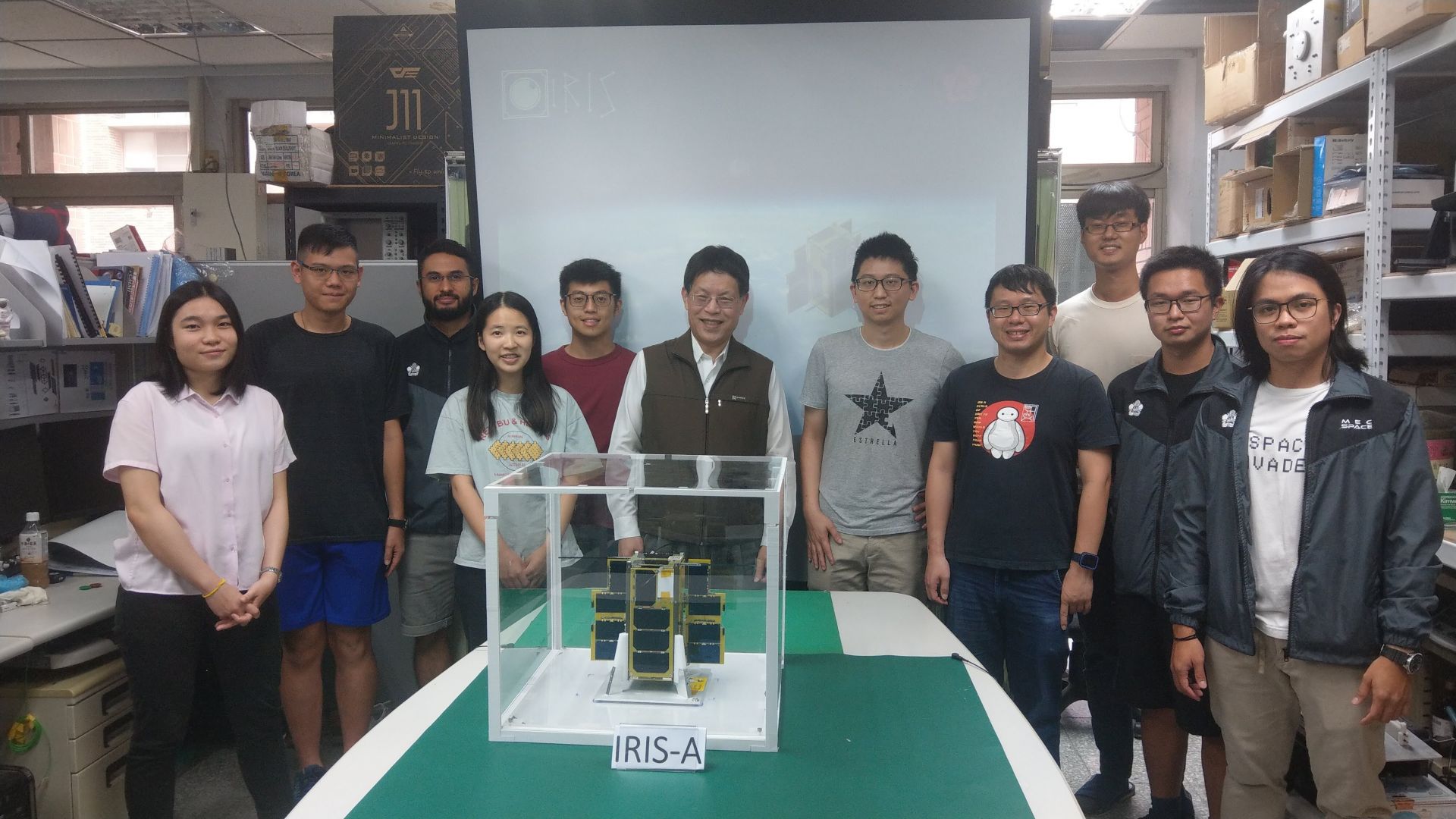
Prof. Jyh Ching Chuang led a team to develop IRIS-A.
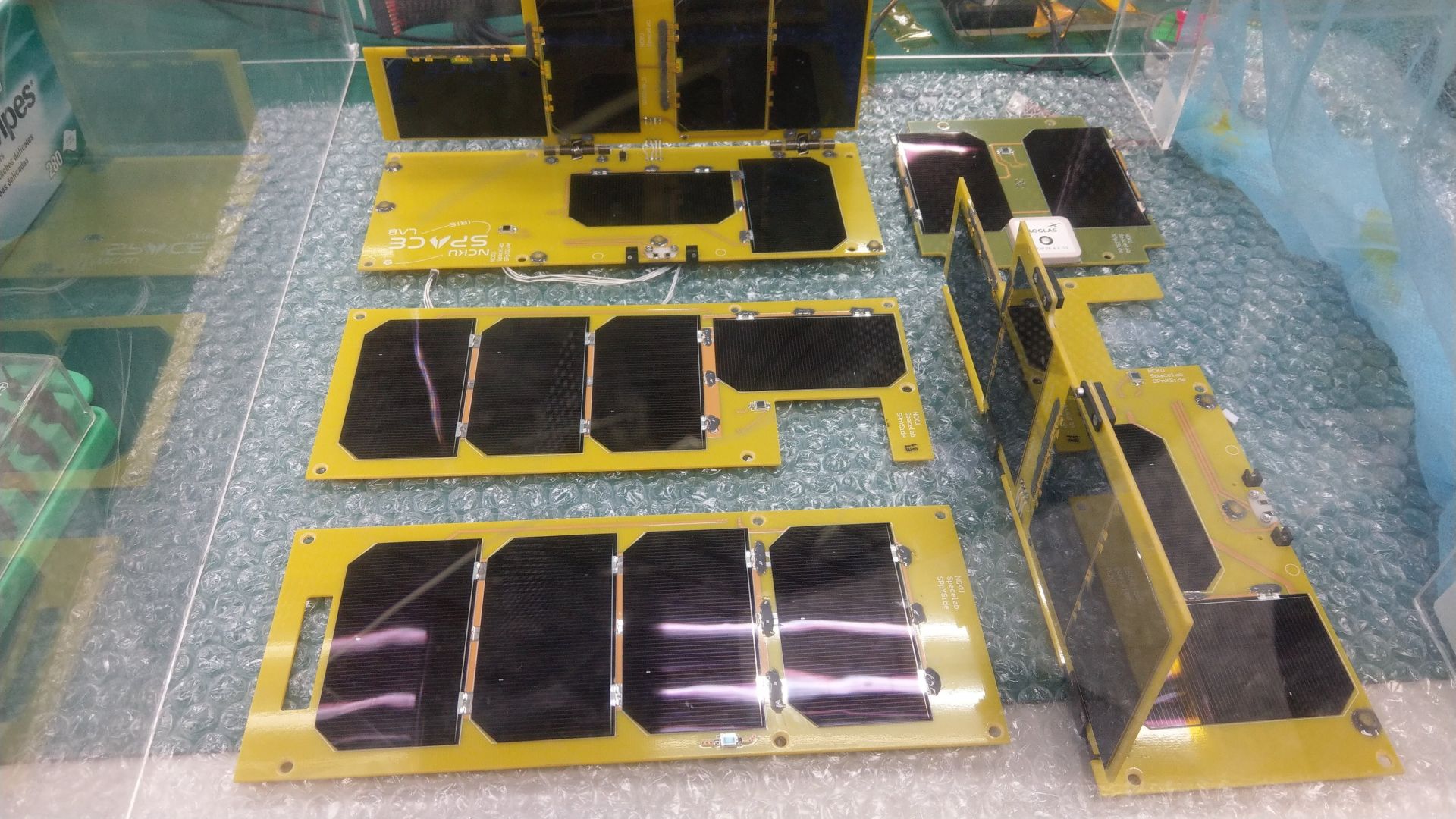
IRIS-A before assembly.

CubeSats are thin, light, short, short-duration and highly maneuverable, which can help the development of satellite communication.






